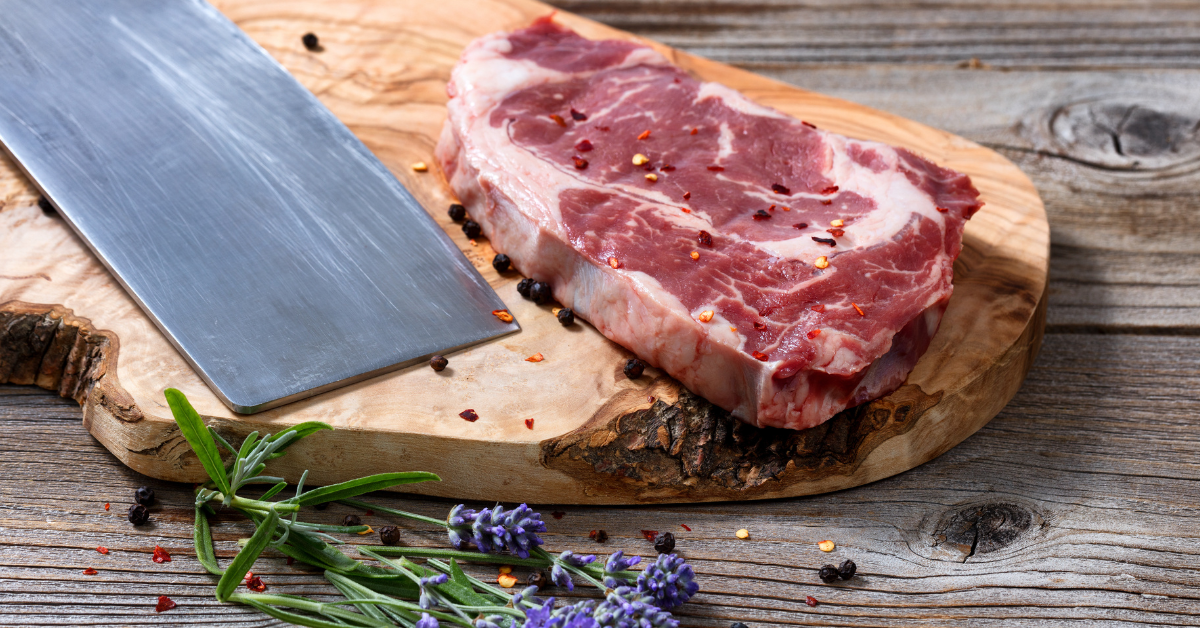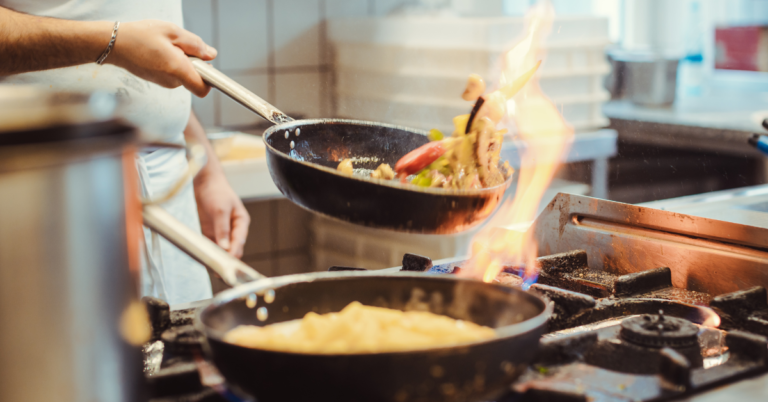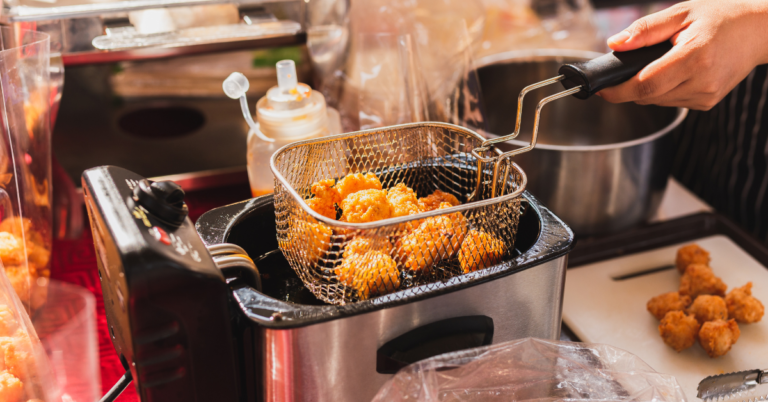Sustainable cooking is gaining momentum as more households seek to use every part of their ingredients and reduce food waste. I recently stumbled upon how beef tallow, an age-old cooking fat, plays a significant role in modern sustainable kitchens. With its rich flavor and high smoke point, beef tallow not only takes dishes up a notch but also helps make the most of ingredients that might otherwise be thrown away.
Beef Tallow: A Sustainable Kitchen Staple
Beef tallow is rendered fat from cattle that, when prepared properly, serves a variety of culinary purposes and can also be used in skin and body care. It has been used for centuries in cooking, baking, and even preserving food. I value beef tallow because it gives you a chance to use parts of the animal that might otherwise be wasted. By transforming leftover fat into a useful cooking medium, you can reduce food waste and support a more closed-loop approach in the kitchen.
This solid fat offers a clean, neutral taste that works well in countless recipes. The traditional process involves slowly melting the fat, straining it, and storing it for future use, resulting in a smooth, shelf-stable product that can replace fats like butter or vegetable oils. In a world where reducing waste is very important, beef tallow stands out as a natural solution that honors traditional methods while meeting modern sustainability needs.
How Beef Tallow Helps Reduce Food Waste
One of the most appealing benefits of beef tallow is its ability to minimize food waste. Instead of simply discarding fat trimmings from meat, the rendering process converts these scraps into a valuable resource. In many professional kitchens nothing goes to waste, and beef tallow is a prime example of how leftovers can be repurposed into something practical. This approach highlights a broader philosophy of making every part of the food useful.
Using beef tallow in cooking cuts down the need for commercially produced oils, which often have high environmental costs. When you use tallow, you are closing the loop in the food production cycle and showing respect for the whole animal. This sustainable practice reduces waste in both home kitchens and larger operations. More chefs and home cooks are rethinking how they handle leftovers, opting for methods that cut waste while providing a delicious alternative to everyday fats.
Getting Started with Sustainable Cooking Using Beef Tallow
Beginning your adventure with beef tallow in the kitchen is easier than it might seem. Once you understand the rendering process and its benefits, incorporating this fat into your meals becomes a rewarding experience. Start with small batches at home; by saving fat trimmings from your meat purchases, you can learn to render tallow without specialized equipment.
To render beef tallow, collect the fat from the cuts of meat you buy. Trim away any meat remnants to avoid impurities, then cut the fat into small pieces and heat it over low heat. As the fat melts, impurities separate out. Strain the liquid fat through a fine sieve or cheesecloth and let it cool until it solidifies. This process not only helps reduce waste but also provides you with a high-quality ingredient for many future meals.
This DIY method underlines the importance of knowing your ingredients and cherishing what might otherwise be thrown away. It is a practical step toward sustainable cooking that ensures you fully use your resources and cut down on environmental impact.
Exploring the Versatile Uses of Beef Tallow in Cooking
One of the things I love about beef tallow is its versatility. Once rendered, it can substitute for other fats in many cooking methods, whether frying, baking, or roasting. Its high smoke point makes it excellent for frying because it can handle high temperatures without breaking down or leaving unwanted flavors in the food.
In baking, beef tallow offers a unique texture and flavor that gives pastries and breads a distinct character. It can help create flaky pie crusts or crispy biscuits, making it a valuable asset in the kitchen. In savory dishes, tallow adds depth; when used in roasting vegetables or meats, its rich profile helps caramelize natural sugars, resulting in an earthy and comforting taste.
There are other creative applications as well. You can use beef tallow as a base for confits or even in making traditional preserves. With its power to stabilize flavors and extend the shelf life of prepared foods, beef tallow shows that reducing waste and boosting flavor can work together. Many cooks view tallow as a way to honor classic culinary traditions while embracing modern sustainable practices.
- Frying: Its high smoke point makes frying foods crisp without breaking down the fat.
- Baking: It provides a distinctive texture and taste to pastries and breads.
- Roasting: It ups the flavor profile of vegetables and meats and creates a caramelized finish.
- Preserving: It acts as a natural preservative, extending the life of cooked foods.
Things to Consider Before Transitioning to Beef Tallow
While the benefits of beef tallow are clear, there are a few things to consider before making it a regular fixture in your kitchen. Understanding where and how your ingredients originate is key. Sourcing beef fat from responsible, sustainable suppliers reinforces your commitment to lowering food waste and encouraging sustainable eating habits.
When it comes to animal products, quality matters. Make sure the fat is free of hormones and antibiotics. If you plan to render tallow at home, be sure to handle the fat carefully to avoid any contamination. The flavor of the tallow can vary based on its source, so it might be necessary to experiment with different types until you find one that suits your cooking style.
Keep in mind that not everyone is used to the taste of beef tallow. Its distinctive flavor pairs well with some dishes but may not work in every recipe. Learning how to balance the rich taste of tallow with other ingredients is a valuable culinary skill that develops over time.
- Sourcing: Ensure the beef fat comes from reputable, sustainable suppliers.
- Quality Control: Follow proper rendering methods to keep impurities at bay.
- Flavor Pairings: Experiment with recipes to balance tallow’s robust flavor with other ingredients.
Advanced Tips for Utilizing Beef Tallow in the Kitchen
Once you have mastered the basics of rendering and cooking with beef tallow, several advanced tips can help you get even more out of this sustainable fat. Experimenting in the kitchen is a fulfilling way to stumble upon creative uses for tallow beyond standard frying or roasting. For example, using beef tallow as a base for traditional sauces and gravies can add a new dimension to your dishes. The high-fat content creates a smooth, velvety texture that helps bind ingredients together, turning an average sauce into something remarkably rich and flavorful.
Another tip is to mix beef tallow with other sustainable ingredients like herbs and spices during the rendering process. This infuses the fat with subtle flavors, making it even more versatile. Additionally, learning about different smoke points helps you decide when to use tallow instead of plant-based oils, ensuring you get optimal performance from your cooking fat.
For those who love adventurous baking, tallow can be put to work in pastries, yielding delicately crispy yet tender textures. However, since tallow can sometimes overpower milder flavors, it’s wise to adjust recipes carefully. Advanced experimentation like this not only expands your cooking repertoire but also promotes a sustainable kitchen practice overall.
Frequently Asked Questions
Question: What is the best way to render beef tallow at home?
Answer: The best method is to start with high-quality fat trimmings. Cut the fat into small pieces, heat slowly over low temperature, and allow impurities to separate naturally. Strain the melted fat through a fine cloth, and let it cool until it solidifies. This simple process works well for many home cooks.
Question: How does beef tallow help reduce food waste?
Answer: Instead of throwing away fat that isn’t used for the main meat, beef tallow transforms these by-products into a practical ingredient. This method reduces food waste by ensuring every part of the animal is used. In both home kitchens and larger food operations, this method not only saves resources but also reinforces a sustainable approach to food preparation.
Question: Can beef tallow replace other fats in recipes?
Answer: Yes, beef tallow can substitute for many fats in recipes. It works well for frying, baking, and roasting. However, due to its robust flavor, it’s a good idea to experiment with small amounts until you discover the right balance for your dish.
Question: Is rendering beef tallow a lengthy process?
Answer: Rendering tallow does require a few hours, as the fat needs to melt slowly to ensure a clean result. Many find that the effort pays off in the long run with a versatile, sustainable ingredient ready for use. With practice, the process becomes more intuitive and less time-consuming.
Wrapping Up
Incorporating beef tallow into your cooking routine is a practical way to embrace sustainability in the kitchen. It offers a double benefit by not only taking your dishes up a notch but also reducing food waste through the full use of the animal. I have found that adopting this practice saves money and deepens the connection to the food you prepare.
This sustainable approach aligns with the popular movement to minimize waste and live more responsibly. Whether you are a beginner or an experienced cook, using beef tallow can bring a rich, robust dimension to your meals. With a bit of ingenuity and a willingness to switch up traditional habits, every part of your ingredients can be put to good use.
As more people aim to adopt sustainable eating habits, beef tallow stands out as an example of how age-old techniques merge with modern environmental values. Making deliberate choices in the kitchen can have a meaningful effect on reducing general food waste and its impact on the environment. Beef tallow is a stellar example of putting resources to full use.
By rendering your own tallow, you create a personal supply that is not only economical but also tailored to your taste. This switch up in cooking habits encourages mindful consumption and a creative approach toward preparing food. Even leftovers and by-products can be transformed into ingredients that enrich your meals.
If you are on the lookout for ways to cut food waste and enjoy bold, traditional flavors, trying beef tallow in your recipes might be a game changer. Approach it with curiosity and patience, and you may find that it becomes a cornerstone of your sustainable kitchen practices.
With environmental concerns growing, adopting sustainable cooking is more important than ever. The choices you make in the kitchen can influence not only your meals but also contribute to a broader effort to reduce waste. Beef tallow is one such choice that illustrates the beauty of using every part of what you have, turning potential waste into an asset. Enjoy the adventure of experimenting and refining your recipes as you integrate this versatile fat into your cooking repertoire.




